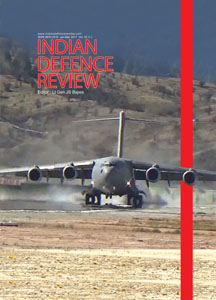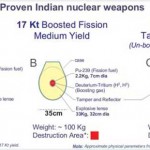Humiliated by the GPS signal blackout during the Taiwan Strait Crisis in 1995-96, which resulted in China losing track of some of its satellites, China fast-tracked the development of its own navigational satellite system, BeiDou (Chinese word for the Big Dipper). The three stage process aimed to provide services within the nation by 2000, cover Asia Pacific by 2012 and go global by 2020.[i] In furtherance of this aim, they have already launched 23 satellites and plan to reach 35 by 2020.[ii] The Chinese government views the BeiDou as the crown jewel among its assets. The successful launch adds a large range of options to its war chest, apart from the prestige it brings.
Ubiquitous GNSS satellites
The sheer range of uses that a GNSS satellite can be put to is mind boggling. Global Positioning Satellite (GPS) by the USA enjoys first mover advantage and is the most widely used system today. Other satellite systems include GLONASS by Russia and the soon to be fully operational Galileo and BeiDou by EU and China respectively.
Civilian Uses
The most obvious use of such satellites is for navigation. Features like Google Maps rely on the data generated by the GPS to create a virtual map of the entire world. The immediate traffic estimates help find the fastest route between two locations. The Chinese are keen on utilizing this technology to ease transportation across their One Belt One Road corridor. The second phase of their BeiDou expansion covers the entire Asia-Pacific region with this very purpose. It is the third satellite system to be used for international navigation.[iii]Apart from transportation, China aims to use the BeiDou to transform tourism, marine fisheries, hydrological monitoring, weather forecasting, surveying, mapping, agriculture, forest fire prevention, disaster reduction and relief.[iv] China is also using BeiDou for civic purposes like keeping track of missing manholes to avoid accidents.[v] Use of positioning by banks allows verification of the location of users before a transaction is processed, substantially reducing the risk of cyber fraud which is often carried out from a different country. BeiDou is the only satellite to also offer short message communication services to its users.[vi]
Apart from these, the atomic clock that these systems rely on are incredibly accurate, within 100 billionths of a second.[vii] This accuracy has allowed the technology to be incorporated in multiple critical technologies. This ranges from financial trading and time stamped business transactions to telecommunications systems and power grids. For instance, telecommunication satellites club multiple voice signals to increase transmission speed and efficiency, using GPS time to keep all their base stations in perfect synchronization.[viii] Even a small difference can send the entire system haywire. The leaps in technology today are quickly transforming everyday life. The potential of automated cars and the probable ease by the integration of multiple devices into an internet of things are all heavily reliant on signals from navigational satellites. Chinese estimates suggest that due to the integration of signals from BeiDou, Chinese companies had already made profits worth over $31.5 billion by the end of 2015.[ix]
Military Uses
Navigational satellites act a force multiplier in the military. Satellites use the timing technology for precision navigation. All the land, sea and air based vehicles use the technology for navigation. All the above mentioned satellites, GPS, GLONASS and BeiDou also provide military grade signals where the precision is much higher than the signals used for civilian purposes. These signals are encrypted and provide additional information like temperature, terrain etc which can be used to optimize military movement. All the border guards along the Western border with India, which covers the troubled Xinjiang and Tibetan Autonomous Region, have been given handheld devices synced to the BeiDou system.[x] Apart from navigation, such satellites generate a massive amount of data that can be used for intelligence purposes. The lines between civilian and military use often gets blurred when data generated for ease of transportation or navigation is also used for intelligence. For instance, China has made the installation of BeiDou navigation system mandatory for all vehicles in the Xinjiang region to crack down on terrorist activities.[xi]
A2AD: Modern life at a Standstill?
Anti access area denial (A2AD) is one of the key thrusts of the Chinese military strategy going forward. It relies on denying access to the satellite signals to the enemy and exploiting the information asymmetry created instead of simply building a larger force like in traditional warfare. We have discussed how navigational satellites cover almost every aspect of modern life. The disruptive potential of successfully blocking the signals is tremendous. The question of the feasibility of such a move then arises. It is speculated that the Chinese are equipping its ballistic and cruise missiles to operate with both BeiDou and GPS signals, arming them to function smoothly even in a scenario where access to GPS signal is denied.[xii]
This gives rise to the belief that in an all out war scenario, China might aspire to block all GPS and other signals, both civilian and military grade. One method is to jam the signal at the satellite itself but this requires the coordinates of all the satellites which are not easily discoverable. Even once they are discovered using ground based stations (China does not have a strong global presence making this difficult), no country today has the capability to completely block all the satellites. This is especially true for the vast Pacific Ocean region. Finally, the sheer number of satellites in space, over 80 by 2020 will make this near impossible. An interesting insight into the Chinese mindset is also provided by the inter-operability agreements that the Chinese themselves have entered into with both the GLONASS and the Galileo.[xiii] Increasing diversification is likely to limit China’s A2AD options in the future, while increasing its economic footprint.
Another possibility is using an anti satellite missile to knock out a satellite completely. It is alleged that in 2013, China successfully tested an anti satellite missile which knocked out a satellite in neo-orbit. Since the laws of armed conflict are inapplicable in space, there is no theoretical bar from China using ASATs to bring down part of the GPS system. China has not yet developed the sheer capacity required to achieve this feat. Again, the sheer number of satellites makes this an impractical proposition. As long as a location can get signal from three different satellites, accurate positioning can continue. Even with lesser satellites, the accuracy will reduce but military forces will not be functioning completely in the dark.
The most likely scenario is spoofing a part of the signal from a limited number of satellites to black out the signal in a particular region. This is essentially giving incorrect information to the ground stations, rendering positioning ineffective. This can be guarded against by constantly verifying the signal against the other available satellites in a region. Most importantly, due to the sheer range, it is unlikely that both the military and the civilian grade signal will be spoofed at the same time. Apart from the US, most other militaries in the world, including Indian, use the openly available civilian grade signal only. It is unlikely that the Chinese will take an economic hit in a limited confrontation so the signals from the BeiDou will continue to be available. There is no method to allow restricted users for an openly available signal, leaving China in a catch-22 situation.
Conclusion
The best approach to guard against any potential disruption in the future is to increase inter-operability by configuring existing satellite systems to work with each other.[xiv] International mechanisms to guard against cyber threats should also be worked upon. These could include independent bodies which verify satellite signals and ethical hackers employed to strengthen existing systems. The gaps in international space law, especially with respect to conflict in space should be remedied as early as possible. The lack of clarity on the framework governing anti satellite systems is another area of concern.
BeiDou is being viewed as a game changer by the Chinese. While the technological achievement is indeed impressive, the economic benefits far outweigh the military edge gained. Even the military advantage is more likely to be in the intelligence domain than in A2AD. While China’s increasing capacity and even greater ambitions should be a matter of concern, the BeiDou is simply the first step in a long journey towards achieving capacity in A2AD.
References
[i] China’s BeiDou Navigation Satellite System, The State Council Information Office of the People’s Republic of China, June 16, 2016.
[ii] Id.
[iii] Full Text: Development of China’s Transport (4), Available at http://www.globaltimes.cn/content/1026320.shtml
[iv] China’s BeiDou Navigation Satellite System, Supra note 1.
[v] ‘Eye in the sky” tracks city’s manhole dangers, March 11, 2016, Available at www.shanghai.gov.cn/shanghai/node27118/node27818/u22ai84520.html
[vi] China’s BeiDou Navigation Satellite System, Supra note 1.
[vii] Timing, Available at www.gps.gov/applications/timing/, last accessed on February 28, 2016.
[viii] Id.
[ix] Manny Salvacion, BeiDou Satellite Generating Billions for China’s Major Firms, Nov 17, 2015
[x] BeiDou 3 (Compass Navigation Satellite System), Available at http://spaceflight101.com/spacecraft/BeiDou-3/, last accessed February 18, 2017.
[xi] Chinese police to track cars in Xinjiang in terror crackdown, February 21, 2017, BBC News, Available at www.bbc.com/news/world-asia-china-39038364, last accessed February 28, 2017.
[xii] China’s alternative to the GPS and its Implications for the United States, US-China Economic and Security Review Commission, January 5, 2017, Available at https://www.uscc.gov/sites/default/files/Research
[xiii] Russia, China Making Progress in Synchronization of GLONASS, BeiDou Systems, December 19, 2016.
[xiv] China’s alternative to the GPS and its Implications for the United States, Supra note 11.
Courtesy: http://www.claws.in/1711/beidou-a2ad-where-is-china-headed-praggya-surana.html





